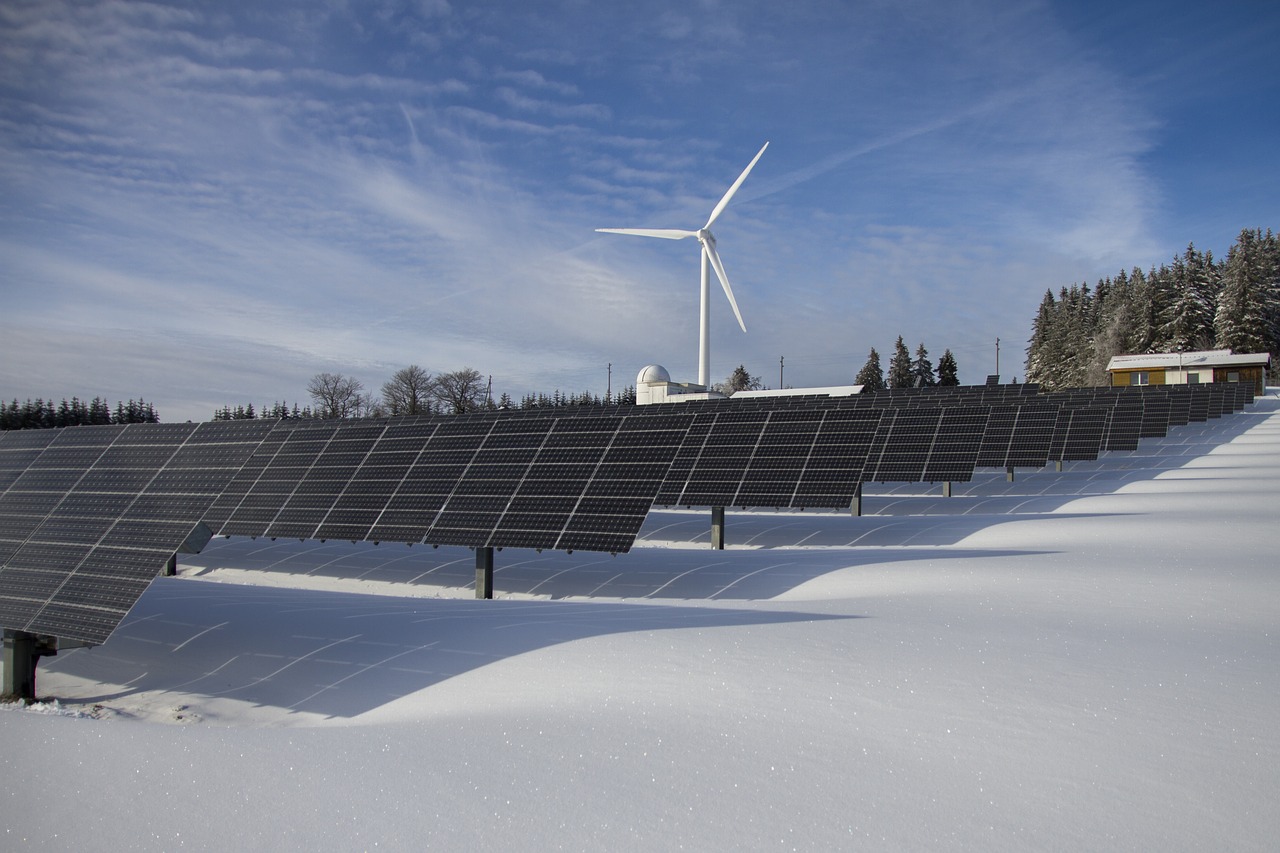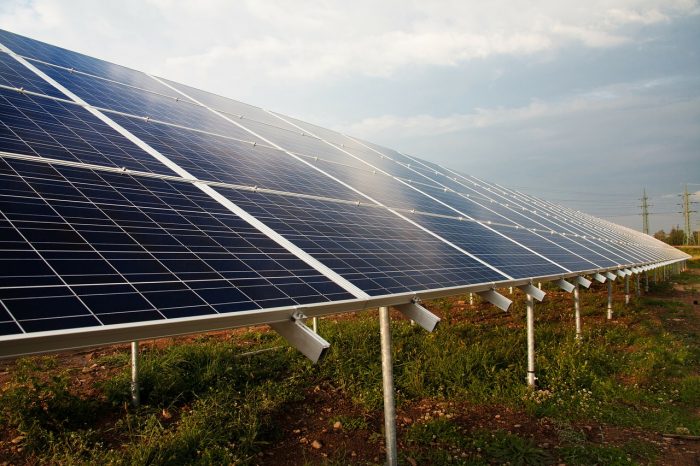
It’s no secret that the renewable energy sector has grown immensely over the course of the past decade. Yet it is still a bit of a surprise to learn that according to a report released by the Federal Energy Regulatory Commission (FERC), the renewable energy sector has greater installed capacity than the energy capacity of coal in the United States.

Photo: (https://pixabay.com/photos/light-bulb-grass-bulb-energy-light-984551/) by Free-Photos via Pixabay, Pixabay License (https://pixabay.com/service/license/)
To put that another way, the United States can now derive more of its energy from renewable resources than they can from coal, marking a historic change in our energy policies. It is speculated that renewable energy overtaking coal was driven by drastic decreases in the cost of solar and wind power, in addition to growing concerns about the environmental impacts of coal.
Renewable Beats Out Coal
An analysis of FERC’s Energy Infrastructure Update (EIU) report done by environmental nonprofit SUN DAY Campaign, as reported by Forbes, explained that renewable energy’s total share of the energy generating capacity of the United States is around 21.56%. Meanwhile, coal’s share of the energy capacity total decreased down to 21.55% in April, which reflects a drop of about 1.5% down from 23.04% of the United States’ capacity one year ago. This past April, the total generating capacity of coal was approximately 157.48 GW while the energy generating capacity of renewable resources was around 257.53 GW.
In addition, SUN DAY’s press release reports that the Federal Energy Regulatory Commission only reports on data relating to large utility facilities capable of producing 1 MW of energy or greater. This means that smaller solar installations such as common rooftop solar cells are not reflected in this calculation. It is estimated that around 30% of total solar energy generation in the United States comes from rooftop solar photovoltaics. When these rooftop solar cells are accounted for, the total solar capacity of the United States is around 4% of the nation’s total energy capacity. It is also thought that this solar capacity is likely to increase by over 20,000 MW by the summer of 2022. The Solar Energy Industries Association reports that the US installed around 10.6 GW of solar capacity last year, bringing the current total solar capacity up to around 6.42 GW or enough for 12.3 million homes across the US to be powered.

Photo: (https://pixabay.com/photos/sunrise-nature-guards-fog-sun-3579931/) by Myriams-Fotos via Pixabay, Pixabay License (https://pixabay.com/service/license/)
In terms of wind energy in the United States, the wind sector has seen substantial growth over the past ten years, with capacity more than doubling in the years between 2009 to 2015. Currently, there are around 97,200 MW of installed wind capacity in the United States, and there are also approximately 40,000 MW of capacity being developed. As CNBC reports, the American Wind Energy Association’s Wind Industry Annual Report found that during 2018 the wind power sector employed around 114,000 people full time, in positions like construction, manufacturing, and operations. The report also expects the number of jobs in the wind sector to increase by around 96% over the course of the next eight years.
One thing that could stifle the growth of jobs in the wind sector is tariffs. Tariffs currently exist for imports from China, and new ones have been proposed on imports from Mexico. The Trump administration has threatened tariffs against Mexico if the country rejects a new deal, and these tariffs could put substantial strain on the wind sector’s ability to expand. The Trump administration has a long history of being against the creation of wind turbines.
An Ongoing Trend
The energy infrastructure update released by FERC shows only a fraction of a percent advantage for renewable power, but unless the trends surrounding renewable energy and coal are for some reason reversed (a situation which seems extraordinarily unlikely), coal’s market share is likely to continue falling as renewables and natural gas gain bigger slices of the energy market pie. FERC’s EIU report suggests that between now and May of 2020, the majority of additions to the nation’s energy capacity will come from renewable resources.
America has massively reduced its coal consumption in the past decade. Coal consumption peaked in 2008, and it plunged to their lowest levels in 40 years since then, dropping a massive 39% according to statistics from the US Energy Information Administration. This trend is continuing despite promises by the Trump administration to relax environmental restrictions and prop up the coal industry. This is likely because the shift toward renewable resources is being driven by economic factors rather than government regulation.
Coal has seen its share of the energy continue to dwindle not only because of the growth of renewables, but because of the shale boom, which left the United States with plenty of natural gas to use for power. Natural gas proved to be much cheaper than coal in the long run.
According to Matthew Hoza, as quoted by CNN, a senior energy analyst from the natural gas and oil consulting firm BTU analytics, there is little that relaxing regulations on coal can do to reverse the current trend.
“The government can tap on the brakes or accelerate this movement — but this progress will continue moving forward,” said Matthew Hoza to CNN. “For the most part, the public is calling for renewables.”
While many different forms of renewable energy exist, the shift towards renewables is being driven largely by advances in the harnessing of solar and wind power. This year alone, wind power capacity increased by 18 units or 1545 MW, while the solar power sector added another 102 units or 1473 MW of capacity. No new coal power plants were created this year.

Photo: (https://pixabay.com/photos/alternative-cell-clean-ecological-21761/) by PublicDomainPictures via Pixabay, Pixabay License (https://pixabay.com/service/license/)
Something that should be kept in mind is that capacity is not the same as generation, and coal still beats out renewables in terms of generation, because of the intermittent nature of renewable power sources. Because of the fluctuations in the amount of energy generated by renewable resources, it will probably be a few more years before renewable power consistently outperforms coal power. However, as with so much else regarding renewable resources, it is quite likely only a matter of time before renewable resources come to dominate generation as well.
Looking Ahead To The Future
Currently, total energy generation is dominated by natural gas in the United States, and it is likely that natural gas will continue to dominate this measurement for some time. While renewable additions are forecasted to outstrip natural gas additions through the year 2020, currently natural gas comprises around 44% of the nation’s total capacity.
However, despite natural gas’ current domination of the energy sector, customers and state governments are increasingly putting pressure on power companies to move away from fossil fuels entirely and adopt renewable energy systems.
As an example of this trend, Con Edison recently acquired $2.1 billion worth of various wind and solar projects across the United States, and the company is now with the second largest producer of solar power in North America. Con Edison is one of the biggest utilities that is investor-owned. Similarly, Xcel Energy, based out of Minneapolis, recently announced their intention to transition to being a carbon neutral energy power company by 2050, despite being a predominantly coal-driven power company.
This trend also applies to natural gas, and wind and solar power systems scheduled for activation over the next few years could potentially displace up to 1,420,000,000 ft.³ of natural gas demand per day.
Just recently the former mayor of New York City, Michael Bloomberg, announced that he is spearheading an attempt to not only reduce the number of coal power plants in the US, but also prevent natural gas utilities from replacing them. The Washington Times reported that Bloomberg recently launched the Beyond Carbon campaign, which would invest around $500 million dollars into shutting down both block natural gas plants and coal-powered energy. As Mary Anne Hitt, the director of Beyond Carbon, explained to the Washington Times, the half billion investment represents “the largest philanthropic investment in climate action in history”.
Another environmental program sponsored by Bloomberg is Beyond Coal, which was partnered with the Sierra Club and according to Bloomberg successful at bringing 289 coal-fired power plants to an end since 2011. While many of these plants have been replaced by natural gas plants, environmental groups are also aggressively fighting the creation of natural gas plants in favor of solar power and wind power utilities. In this sense, Beyond Carbon is a natural extension of Beyond Coal’s philosophy.
The natural gas industry is naturally less excited about this news, and Erin Mundahl, a spokesperson for Energy In Depth, an associate of the Independent Petroleum Association of America, argued to the Washington Times that natural gas has successfully reduced many emissions. Mundahl also argued and Bloomberg’s attempts to prevent the growth of natural gas plants represents an “attempt to force his unrealistic and dangerous policies”
The Beyond Carbon Campaign is also attempting to promote electric vehicles, hoping to encourage people to adopt them over using diesel or gas vehicles. Beyond this, the campaign wants to encourage the use of sustainable, regenerative farming practices and transition to the use of green-power to heat or cool buildings rather than using gas or oil for thermal regulation.









